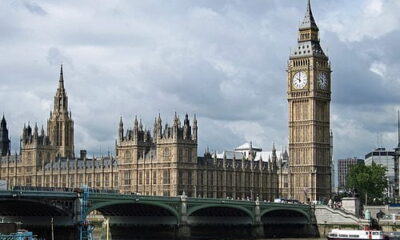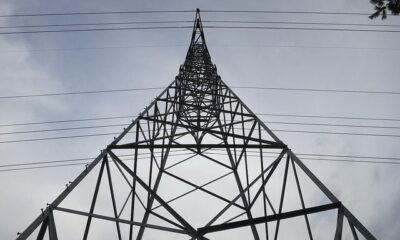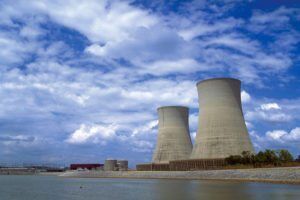

Features
Fukushima: one year on
A year ago today I was angry. Angry because the Western media—and the Eastern media for that matter—were sensationalising only part of a story that cost 15,854 Japanese people their lives and left untold others heartbroken.
On March 11, 2011 a 9.0 magnitude earthquake struck Japan with devastating ferocity. And I was immediately connected with the events; having spent five extraordinary years in Tokyo, many of my good friends were documenting the story through social media feeds. The news was quick to follow, and footage of the monster tsunami ripping though Japan’s northeast coast is still etched in my mind.
A year ago today I was angry. Angry because the Western media—and the Eastern media for that matter—were sensationalising only part of a story that cost 15,854 Japanese people their lives and left untold others heartbroken.
On March 11, 2011 a 9.0 magnitude earthquake struck Japan with devastating ferocity. And I was immediately connected with the events; having spent five extraordinary years in Tokyo, many of my good friends were documenting the story through social media feeds. The news was quick to follow, and footage of the monster tsunami ripping though Japan’s northeast coast is still etched in my mind.
But only a matter of hours later, global news coverage switched focus to a growing side story: the impending nuclear meltdown of reactors 1, 2 and 3 at the Tokyo Electric Power Company’s (TEPCO) Fukushima Daiichi nuclear power plant.
The fear that spread like wildfire around the globe was echoed by panic buying of iodine pills for unnecessary protection against an impending radioactive cloud several thousand miles away. And while some foreigners in Japan were fleeing for their lives, I truly wished I was back in Tokyo, comforting my two best friends who were expectant with the imminent arrival of their first child.
I wrote at the time for Pharmaceutical Technology magazine, “Many of my friends are based in Tokyo where they have been more directly harmed by sensationalist overseas reporting than actual events. Nevertheless, the threat of nuclear fallout has lifted its ugly head and made its impact felt all over the world […] How well are we prepared for the unexpected?”
That the anniversary of March 11, 2011 for most brings forth memories of nuclear meltdown and not the earthquake and subsequent tsunami that claimed so many lives, tells us a lot about how people now perceive nuclear power safety.
Pre-Fukushima, nuclear power certainly had people ill at ease, but Chernobyl (1986), Three Mile Island (1979) and Windscale (1957) were far enough away in either distance or time to put to the back of one’s mind; “We’ve made progress since then, haven’t we?” And apart from the usual ‘not-in-my-backyard’ brigade, nuclear power was accepted by many as a somewhat precarious necessity; a solution to a looming global energy.
Post-Fukushima, Japan has shut down all but two of its 54 nuclear reactors and some are left asking “What now?” The Economist walked us through a dream that failed beginning, “The enormous power tucked away in the atomic nucleus, the chemist Frederick Soddy rhapsodised in 1908, could ‘transform a desert continent, thaw the frozen poles, and make the whole world one smiling Garden of Eden’”. As a science fiction fan, I can empathise with such dreams. And as a scientist, I know we do have the ability to harness that which is around us. Make it work to our advantage. But reading reports six months after the meltdown detailing reactor cores that were still too hot to open and reading this week’s reports of the ongoing and extensive clean up operations at Fukushima, I am left dumbstruck. Are we in control?
Certainly in Japan, the anti-nuclear sentiment is strong. 45,000 people demonstrated against nuclear power in Tokyo on the anniversary of the Great East Japan Earthquake, expressing growing concern at the government’s desire to restart reactors that have been shut down for safety checks. Perhaps The Mainichi Daily News said it best: “The illusion of nuclear power safety has been torn out by the root”.
But beyond the safety issues, the true cost of nuclear power, both financial and environmental, has been catapulted into the spotlight.
The ‘big six’ energy companies in the UK apparently have the answer to one of those issues: “build more gas-fired power stations than we actually need”. Yet, increasing our reliance on a limited resource and driving up the cost of an already expensive imported fuel doesn’t leave me enthused.
But didn’t I just say we had the ability to harness what is around us? Surely it is time to embrace a new sci-fi dream.
Marubeni, a Tokyo-based corporation founded in 1858, recently announced plans for an experimental floating wind farm with a consortium that includes the University of Tokyo, Mitsubishi and IHI Marine United. The offshore project is sponsored by the Ministry of Economy, Trade and Industry and consists of three floating wind turbines and one floating power sub-station off the coast of Fukushima.
A Marubeni press release stated: “Fukushima Prefecture expects this experimental project to spawn a new industry in renewable energy and create employment as part of recovery efforts in the wake of the Great East Japan Earthquake. Through this experimental project, Fukushima Prefecture hopes to develop a large wind farm industry”.
Yet, on our own windy but admittedly seismically inactive island the debate over nuclear power is far from over, with some commentators rearing up against a recent letter to Prime Minister David Cameron from Jonathon Porritt et al., which stated “The first anniversary of the nuclear accident at Fukushima has drawn attention to the current policy of facilitating a large programme of nuclear build in England and Wales. It is now clear that the impacts on Japan were far more serious, longer lasting and more expensive than initially presented”.
The letter went on to question the wisdom of the policy and offer advice on aspects that Cameron may not have been made aware of by Ministers, noting that other G8 countries are moving towards reduced reliance on nuclear power. George Monbiot, for one, does not agree.
Nevertheless, Japan aims to transform its own energy mix and by the end of March will proffer several options before drawing up a new master plan for the summer that will replace the previous nuclear-focused energy policy. The new strategy is expected to include drastically increased energy conservation and a faster shift to renewable energy usage.
For Japan at least, from the ashes rises the phoenix. I have no doubt in my mind that the Japanese people, if not the government, will force change and innovate to address the nation’s power needs through renewable and green energy generation. After all, the voice of a 127 million united citizens is very loud indeed.
Incidentally, my friend’s baby boy was born a year today—March 16, 2011—in Tokyo and weighed a very healthy 9 lbs 2 oz. Happy birthday, little man!
His name, by some happenstance, is Zachary.
“The dream was gone, yet I knew which way to go. As I walk I search the horizon for a trace of green. I am hopeful.”
Z for Zachariah, Robert C. O’Brien, 1973
Photo: Yuyu Tamai via Flickr
Related articles:






























